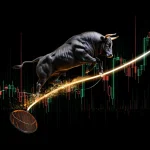
Conquering Fear: Invest with Confidence
Nov 30, 2024
Fear of Investing? Transform Anxiety into Financial Triumph with These Steps
Fear, a relentless predator in the investing world, has devoured countless opportunities, paralyzed decision-makers, and fueled catastrophic market collapses like the Dow Jones 2008 crash. However, fear isn’t just a reaction; it’s a force that, when understood and conquered, can transform timid investors into unstoppable financial strategists. This article delves into the intricacies of fear and stupidity in investing, how they interact, and actionable steps to channel these challenges into triumph.
The Paralyzing Grip of Fear: A Historical Perspective
The 2008 Dow Jones crash wasn’t merely an economic event but a masterclass in the destructive power of fear. In November 2007, fear cast its long, ominous shadow over global markets. Doom-laden predictions spurred a frenzied exit as the masses rushed for safety, only to tumble off a metaphorical cliff of financial despair.
This scenario repeated what history teaches us: fear is contagious and blinding. Fear magnifies risks, obscures opportunities, and incites the herd mentality that turns volatility into disaster. Investors caught in this vortex rarely pause to question the rationality of their actions. Instead of preparing for adversity, they celebrate fleeting market highs or lament exaggerated lows.
Yet, the astute few, unshackled by emotional biases, see these panics as golden opportunities. In 2008, savvy investors planted the seeds of wealth amid the chaos, exploiting the masses’ misjudgments. This phenomenon underscores an essential truth: fear isn’t an enemy—it’s an indicator of opportunity.
The Super Bull Market of Stupidity
If human behaviour could be charted, stupidity would show a perpetual bull market. It has no corrections, bearish cycles, or end in sight. From tulip manias to the housing bubble, human greed and fear form the bedrock of collective irrationality.
This bull market of stupidity manifests in the ceaseless chase for wealth. Despite having enough to live comfortably, people obsess over amassing more, oblivious to the diminishing returns of such pursuits. Instead of seeking wealth with purpose, they chase it with desperation, often at the cost of long-term stability.
The result? It is a cycle in which irrational exuberance gives way to irrational despair, creating the perfect storm for savvy investors to capitalize on mistakes. As the adage goes, “Those who seek riches find them; those who chase them end up with rags.”
Why Fear Dominates the Masses
Since Gustave Le Bon and Alexis de Tocqueville, one truth has remained unchanged: fear governs human behaviour. In a crowd, fear multiplies exponentially, fueled today by the rapid spread of information (and misinformation) through the internet. One negative headline can incite a market-wide panic, with individuals blindly following the herd, convinced that disaster is imminent.
But this same fear offers clarity to those who refuse to succumb. When the masses panic, it’s time for the contrarian to rejoice. Markets thrive on cycles, and every downturn is a prelude to recovery. Those who learn to analyze the situation with logic and detachment position themselves to thrive where others falter.
Transforming Fear into Financial Triumph
To conquer fear, one must approach it systematically. Here are practical steps to transform anxiety into confidence:
- Understand the Role of Fear in Markets
Recognize that fear is a natural part of investing. Instead of avoiding it, study its patterns. In moments of collective panic, such as the Dow Jones 2008 crash, opportunities abound for those who maintain composure and analyze the situation rationally. - Educate Yourself Continuously
Ignorance fuels fear. Deepen your knowledge of markets, technical analysis, and historical trends. For instance, the resilience of Dow Transports and Utilities often serves as a reliable barometer for market health. Armed with such insights, you can distinguish between genuine risks and overblown fears. - Adopt a Long-Term Perspective
Short-term volatility often feels more catastrophic than it truly is. By focusing on long-term goals, you can mitigate the impact of short-term swings. History shows that, while painful, market crashes consistently pave the way for bull markets. - Practice Emotional Discipline
Emotional responses to market movements—be it euphoria or despair—can lead to irrational decisions. Techniques such as mindfulness, meditation, and journaling can help investors detach emotionally from market noise and focus on data-driven decisions. - Embrace Risk Strategically
Fear often arises from a lack of control. Counteract this by implementing robust risk management strategies, such as diversification, stop-loss orders, and position sizing. These tools allow you to approach risk with confidence, not anxiety.
When Panic Reigns, Opportunity Knocks
While disastrous for the masses, the collective panic during downturns is a beacon for the informed. For example, during the 2008 crash, the Dow’s significant pullbacks weren’t just losses; they were invitations. As the saying goes, “When the masses panic, it’s time to celebrate.”
Yet, the masses rarely see it this way. Driven by fear, they sell low and buy high, perpetuating a loss cycle. This is why understanding and embracing mass psychology is crucial. When markets plunge, the true contrarian recognizes the birth of a super bull market amidst the rubble.
Reevaluating Wealth and Happiness
While fear dominates investing, the relentless pursuit of wealth drives human behavior. However, the chase for money offers diminishing returns beyond a certain point. Once basic needs are met, accumulating more wealth seldom correlates with increased happiness.
True financial triumph lies in the art of seeking, not chasing. Seek opportunities when others flee. Seek value when others overpay. Above all, seek purpose in wealth, understanding that financial freedom is a means to an end, not the end itself.
Lessons from the Dow Jones 2008 Crash
The 2008 crash serves as both a cautionary tale and an inspiring lesson. Here’s what it teaches us:
- Market Crashes Are Cyclical: No downturn lasts forever. Every crash is a prelude to recovery, and those who position themselves during the chaos reap the rewards during the uptrend.
- Fear is a Contrarian Indicator: The louder the panic, the greater the opportunity.
- Data Over Emotion: Trust in technical indicators like volume, moving averages, and resilience in key sectors (e.g., Dow Transports and Utilities) to guide your decisions, not sensational headlines.
Conclusion: Fear is the Catalyst for Triumph
The Dow Jones 2008 crash isn’t just a historical event; it’s a roadmap. It demonstrates the destructive power of fear and the unparalleled potential of those who rise above it.
Investors who master emotional discipline, embrace calculated risks, and maintain a long-term perspective can transform fear into their greatest ally. The market does not care about emotions—it rewards logic, strategy, and resilience.
Don’t flee with the herd when the next market shock inevitably arrives. Stand firm, analyze with clarity, and act decisively. Let fear guide others to the cliff’s edge while you chart a course to financial triumph.












